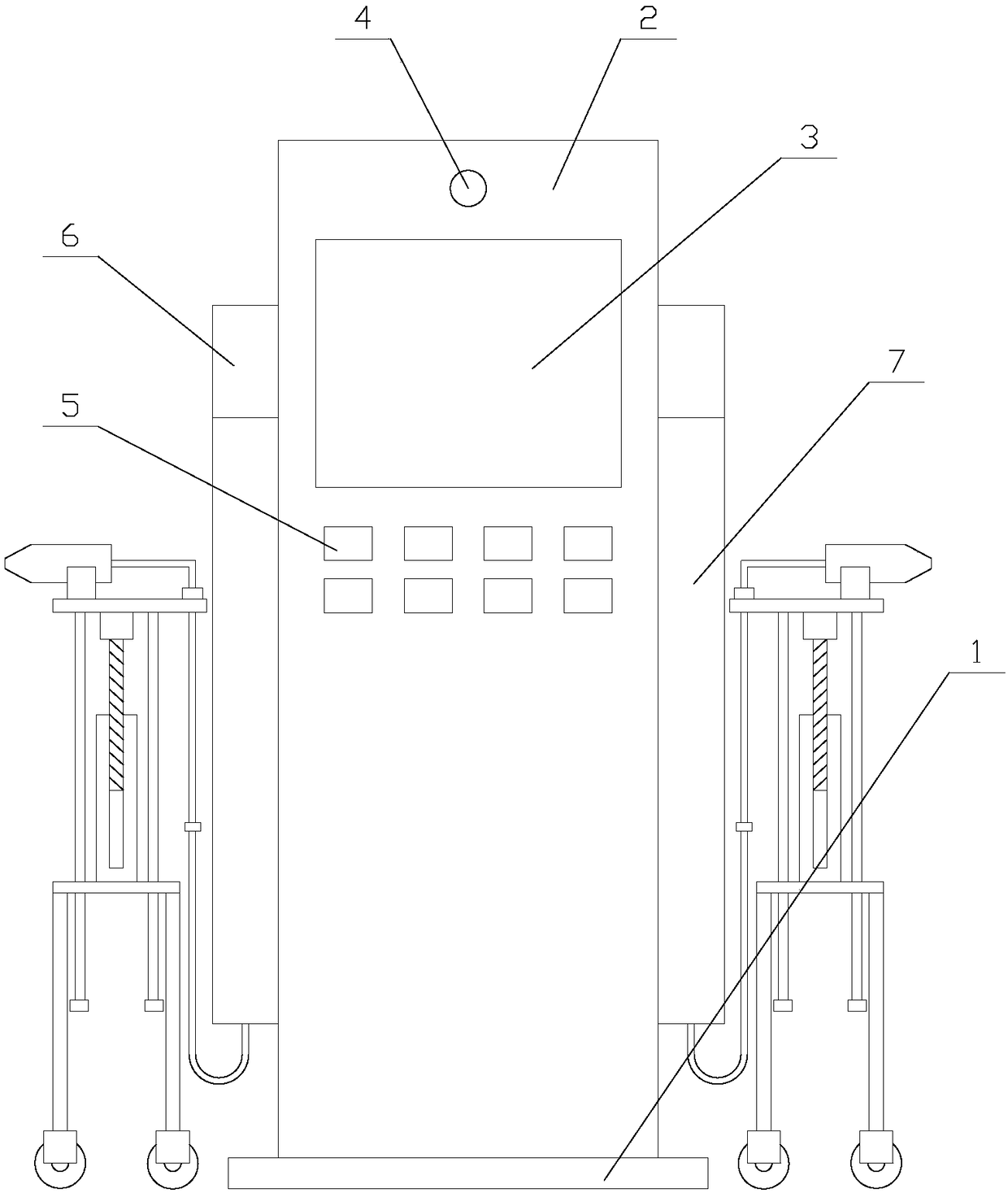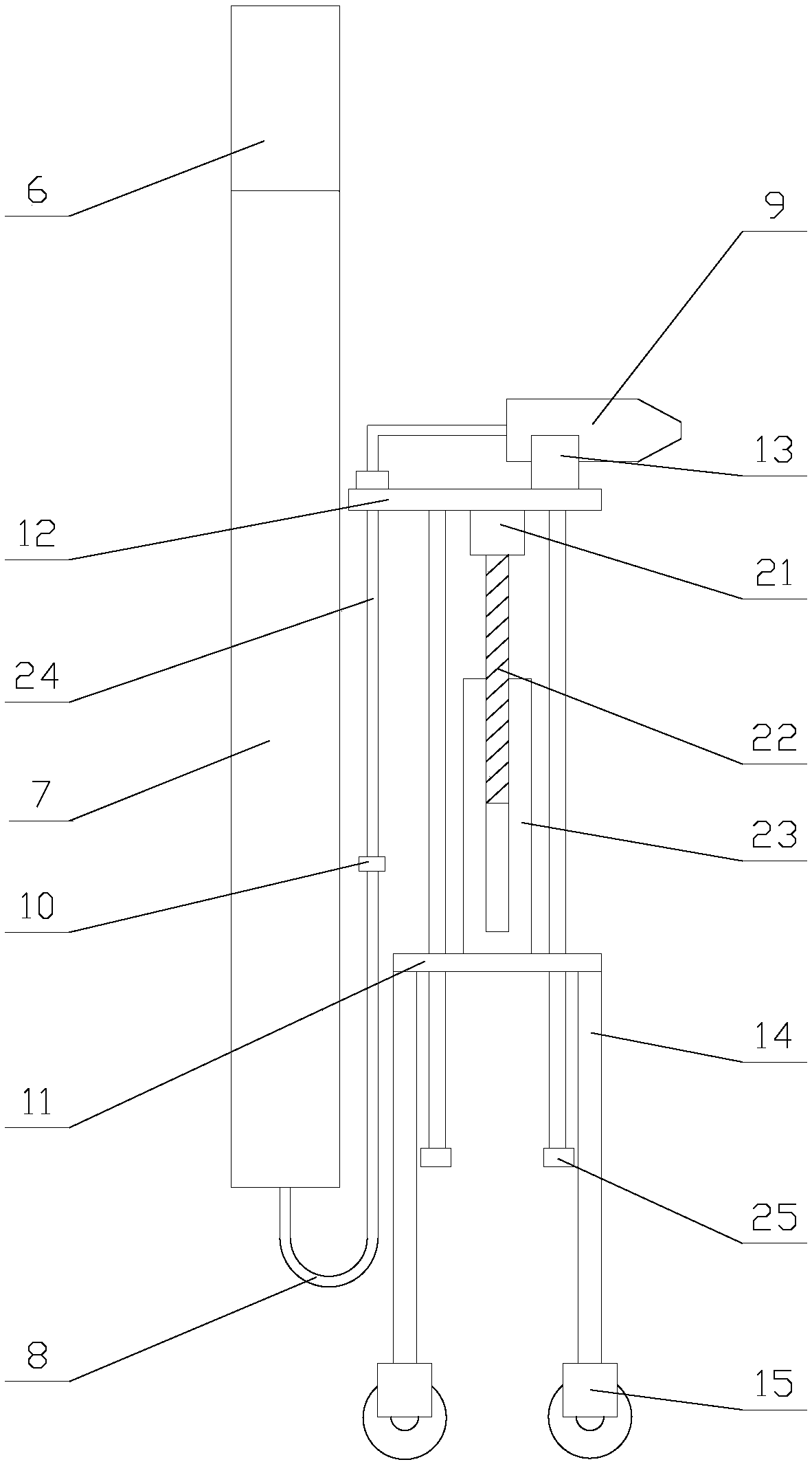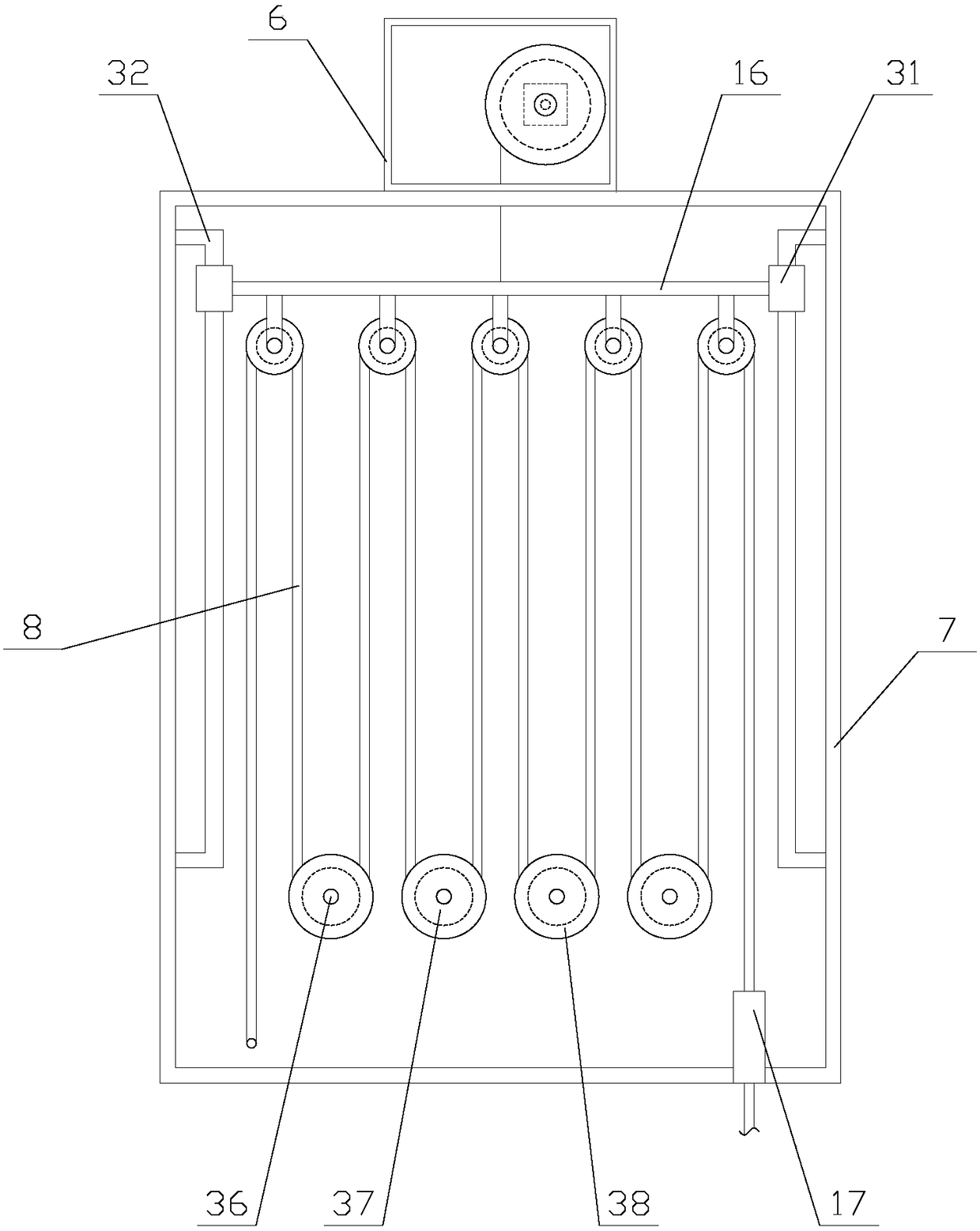Safe and reliable intelligent new energy vehicle charging pile convenient to use
A new energy vehicle, intelligent technology, applied in electric vehicle charging technology, charging stations, electric vehicles and other directions, can solve problems such as easy and ground wear, equipment damage, short circuit, etc., to ensure stability, improve practicability, avoid shedding effect
- Summary
- Abstract
- Description
- Claims
- Application Information
AI Technical Summary
Problems solved by technology
Method used
Image
Examples
Embodiment Construction
[0027] The present invention is described in further detail now in conjunction with accompanying drawing. These drawings are all simplified schematic diagrams, which only illustrate the basic structure of the present invention in a schematic manner, so they only show the configurations related to the present invention.
[0028] Such as figure 1 As shown, a safe, reliable and easy-to-use intelligent new energy vehicle charging pile includes a base 1, a main body 2 and two charging mechanisms, the main body 2 is fixed above the base 1, and the two charging mechanisms are respectively located on the main body 2 On both sides of the main body 2, a display screen 3, a camera 4 and a plurality of control buttons 5 are provided, and a PLC is provided in the main body 2, and the display screen 3, camera 4 and control buttons 5 are all electrically connected to the PLC;
[0029] When the charging pile is in use, by operating the control button 5, the PLC controls the operation of the ...
PUM
 Login to View More
Login to View More Abstract
Description
Claims
Application Information
 Login to View More
Login to View More - R&D
- Intellectual Property
- Life Sciences
- Materials
- Tech Scout
- Unparalleled Data Quality
- Higher Quality Content
- 60% Fewer Hallucinations
Browse by: Latest US Patents, China's latest patents, Technical Efficacy Thesaurus, Application Domain, Technology Topic, Popular Technical Reports.
© 2025 PatSnap. All rights reserved.Legal|Privacy policy|Modern Slavery Act Transparency Statement|Sitemap|About US| Contact US: help@patsnap.com



